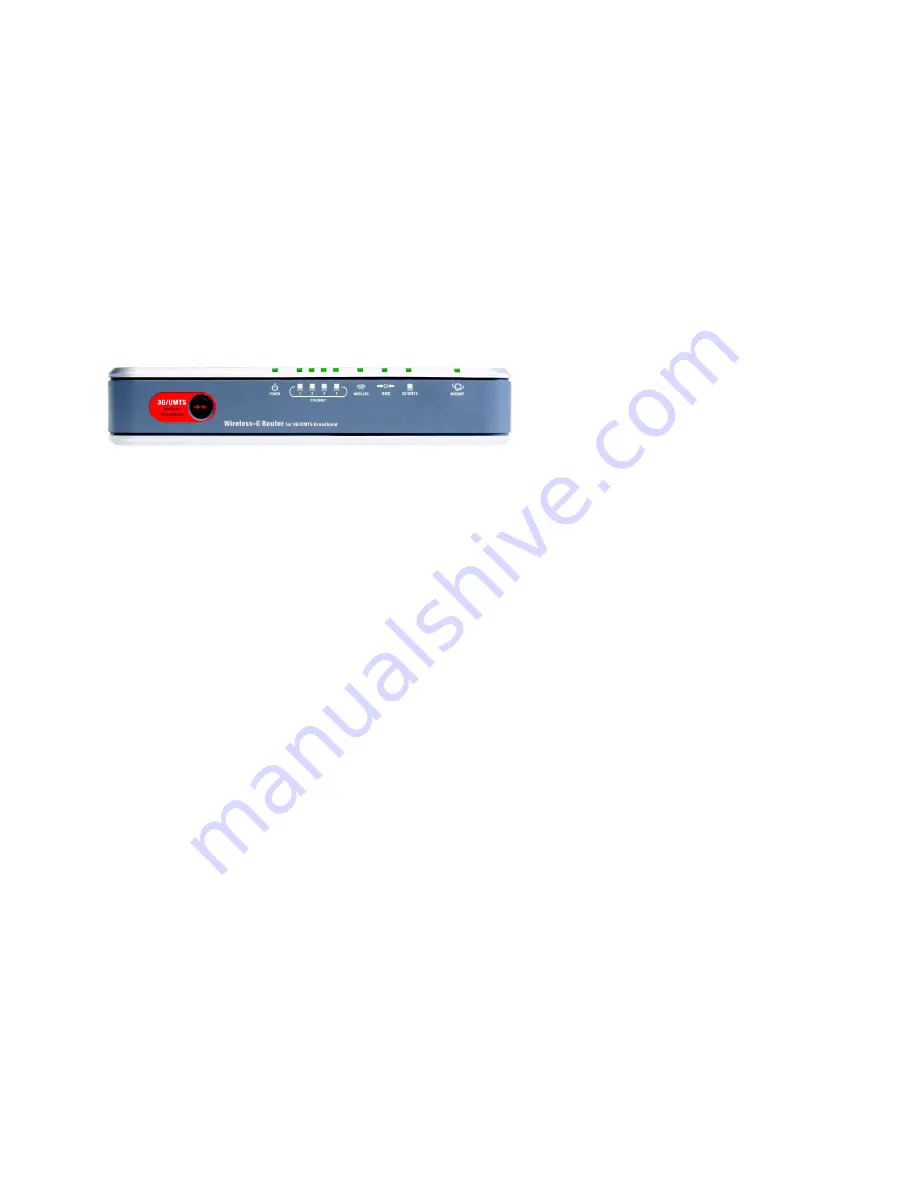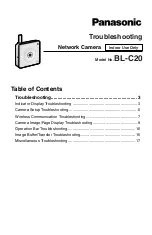
7
Chapter 3: Getting to Know the Wireless-G Router for 3G/UMTS Broadband
The Router’s LEDs
Wireless-G Router for 3G/UMTS Broadband
The Router’s LEDs
The Router’s LEDs are located on the Router’s other side panel.
3G/UMTS Button
This button allows you to connect to and disconnect from the 3G/UMTS or GPRS network (you
can also connect and disconnect using the Basic Setup tab of the Router’s Web-based Utility).
POWER
Green. The
POWER
LED lights up and will stay on when the Router is powered on. When the
Router goes through its self-diagnostic mode during every boot-up, this LED will flash. When
the diagnostic is complete, the LED will be solidly lit.
ETHERNET
1, 2, 3, 4
Green. These numbered LEDs, corresponding with the numbered ports on the Router’s back
panel, serve two purposes. If the LED is continuously lit, the Router is successfully connected
to a device through that port. A flashing LED indicates network activity over that port.
DMZ
Green. The
DMZ
LED lights up and will remain lit while the Router uses its DMZ function.
WIRELESS
Green. The
WIRELESS
LED lights up whenever there is a successful wireless connection. If the
LED is flashing, the Router is actively sending or receiving data over the wireless network.
3G/UMTS
Blue/Green. The
3G/UMTS
LED flashes as the Router connects to the mobile network. It is
solidly lit when the connection is established. The LED lights up blue if the Router connects to
a 3G/UMTS network. The LED lights up green if the Router connects to a GPRS network.
If the LED quickly flashes, alternating between blue and green, and the Router does not have a
connection to the mobile network, then either the Router’s PIN code is incorrect, or there is no
Vodafone Mobile Connect 3G/UMTS data or SIM card inserted when you push the 3G/UMTS
Connect/Disconnect button. Contact Vodafone for assistance (contact information is available
in “Appendix J: Contact Information”).
INTERNET
Green. The
INTERNET
LED lights up when a connection is made through the Internet port.
Figure 3-3: The Router’s LEDs
















































